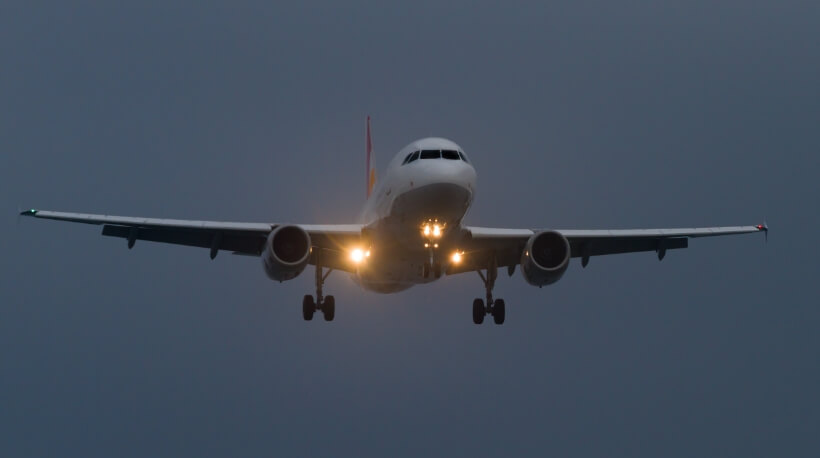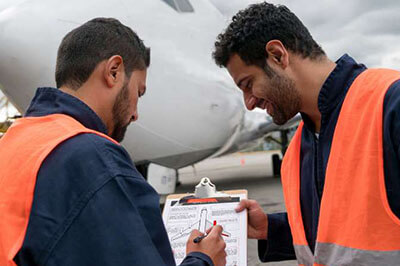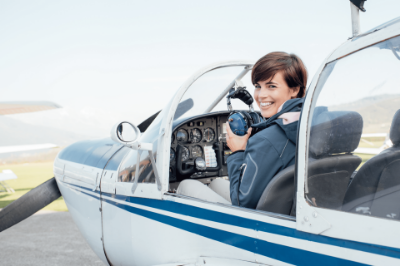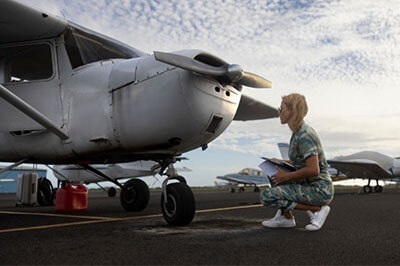This article provides a comprehensive overview of the various types of aviation lighting systems used in aircraft for safety and visibility. All airplane lights have a specific function and role, from communicating an aircraft's position to other pilots and ground control to ensuring safe taxiing on airport grounds.

Safety and visibility are among a pilot's biggest priorities – both during the day and at night. Airplane lights are critical to ensure aircraft are seen (and pilots can see), significantly reducing the risk of mid-air collisions or other dangerous incidents. Each has a distinct purpose, from position lights to specialized aircraft landing lights.
Whether you're a seasoned pilot, an aviation enthusiast or someone who simply wants to understand what's lighting up the skies, this article will illuminate the exciting world of aircraft lights.
1. Aircraft Position Lights: Guiding the Way Through the Skies
Navigating the open skies requires precision and clarity. Pilots and ground control need an easy way to spot and interpret an approaching aircraft's direction and orientation, especially in low-visibility conditions. On all planes, the primary tools used to assist in this endeavor are the aircraft position lights (also referred to as aircraft navigation lighting).
The Color Coding System
When observing an aircraft, you'll likely notice three distinct colors of aircraft position lights: red, green and white. Each color has a specific meaning, indicating a different aspect of the aircraft's position.
- Red Lights: Situated on the left wingtip, red lights indicate the port side of the aircraft. When another pilot sees a red light, they can readily determine that the aircraft is either facing away or crossing their path from left to right.
- Green Lights: Positioned on the right wingtip, green lights signify the starboard side. If another pilot encounters a green light, they know that the aircraft is either moving in the same direction as they are or crossing their path from right to left.
- White Lights: Typically found at the rear, white aircraft navigation lighting indicates the aircraft is moving away from an observer. Often, they're integrated into the same system as the red and green lights but are placed either on the tail or along the trailing edges of the wings.
2. Aircraft Strobe Lights: The High-Visibility Safety Feature
While aircraft navigation lighting indicates an aircraft's position and orientation, aircraft strobe lights are used to help dramatically increase an aircraft's visibility in all weather conditions, day or night. These high-intensity flashing white lights play a vital role in alerting other pilots to the aircraft's presence, thereby helping to minimize the risk of a mid-air collision.
Found on either the wingtip edge or the tail, white aircraft strobe lights ensure maximum visibility. Their intense brightness makes them extremely effective during daytime and nighttime operations. It's hard not to notice an airplane's strobe lights due to their high-intensity flashes. They are particularly crucial in crowded airspace and during takeoff, when the risk of collision is highest. As aircraft anti-collision lights, strobe lights are regulated by aviation authorities like the FAA, which sets guidelines on their usage t-o ensure safety across all aircraft types.
3. Aircraft Beacon Lights: Signaling Engine Operation & Status
Unlike the other airplane lights we've talked about, aircraft beacon lights have a more specific role focused on ground safety. Aircraft beacon lights warn ground crews and other personnel that an aircraft's engines are running or are about to start running. Beacon lights are usually situated on the top and bottom of an aircraft's fuselage for maximum visibility to ground crews. In addition, they're most commonly colored red and flash to be visible from a distance, even during the daytime. Their position and distinct color make them easily distinguishable from other airplane lights.
While aircraft beacon lights are often turned on before the engine starts and remain on until the engine is shut down, their usage can differ depending on the type of aircraft and operational procedures.

4. Aircraft Landing Lights: Illuminating the Path to a Safe Touchdown
When it comes to the crucial moments of takeoff and landing, aircraft landing lights are indispensable. As part of a comprehensive aircraft lighting system, landing lights improve pilots' visibility during these critical phases, helping them better gauge their altitude, speed and positioning relative to the landing surface.
Aircraft landing lights are usually located on the leading edges of the wings or embedded in the forward fuselage. Engineered to be extremely bright, these lights can illuminate the runway or landing area from a significant distance, making them one of the most powerful light sources among aviation lighting. While the primary function of landing lights is to assist pilots during takeoff and landing, they also serve as another form of aircraft anti-collision lights. When activated, landing lights make it easier for other pilots and air traffic controllers to spot the aircraft, particularly during daytime and twilight. They are especially useful for pilots flying under Visual Flight Rules (VFR).
As with other aircraft lights, the use of landing lights is regulated by aviation authorities. Pilots must usually turn them on below certain altitudes or within specific distances from an airport. Failure to comply with these regulations can result in penalties and may compromise safety.
5. Aircraft Taxi Lights: Guiding Aircraft Safely on the Ground
Once an aircraft has touched down, or before it takes to the skies, it has to navigate a labyrinthine of airport taxiways. That's where aircraft taxi lights come into play. These airplane lights are designed to help pilots see (and be seen) while taxiing on the ground, ensuring a safe path to and from the runway.
Aircraft taxi lights are found near the nose wheel or the main landing gear. Unlike high-intensity aircraft landing lights, taxi lights are less bright but sufficient to illuminate the immediate path. They are usually directional and can sometimes be steered along with the aircraft's nose wheel to provide better forward and lateral visibility. Though not as stringently regulated, the usage of aircraft taxi lights still follows general aviation protocols. These guidelines help standardize their operation, making it easier for all ground-based personnel and pilots to understand the status and intentions of taxiing aircraft.
A Quick Overview of Airplane Lights
If you find it challenging to grasp the intricate details and functionalities of various airplane lights at night, check out this short video for another quick rundown. Watching this will give you a quick, real-world look at how these lighting systems operate in different flight scenarios.
Frequently Asked Question: Aviation Lighting
If you still have questions or would like to learn more about the various types of aviation lighting, check out the answers to our most frequently asked questions below.
How Are Airplane Lights Powered?
The aircraft's electrical system typically powers airplane lights. Modern aircraft may also use aircraft LED lighting, which is more energy-efficient and has a longer lifespan than traditional airplane lamps. Backup power systems are often in place to ensure the continuous operation of crucial aircraft lighting systems during electrical failures.
Is It Mandatory to Use Airplane Lights?
Certain airplane lights, like aircraft navigation and anti-collision lights, are usually mandated by aviation authorities, especially at night or in poor visibility conditions. Failure to use these lights can result in penalties and is considered a breach of safety protocols.
How Do Pilots Control the Various Aircraft Lights?
Pilots control aircraft lights through a dedicated panel within the cockpit. This allows them to turn on or off, and sometimes dim, various lights like aircraft navigation, landing and cockpit lights according to flight requirements.
Your One-Stop Shop for Premium Airplane Lights
Don't compromise when it comes to your safety and visibility in the skies. At Air Power Inc., we understand the critical importance of high-quality aircraft lighting. That's why we offer a comprehensive range of lighting solutions sourced from top-rated manufacturers you can trust. Whether you're flying airplane lights at night or during the daytime, our products ensure maximum visibility, durability and compliance with aviation standards. We offer the industry's best prices, making it easier than ever to equip your aircraft with the best lighting systems available. Make the bright choice today – choose Air Power Inc. for all your aircraft lighting needs.
Shop All Airplane Lights
Related Articles: Airplane Lights



